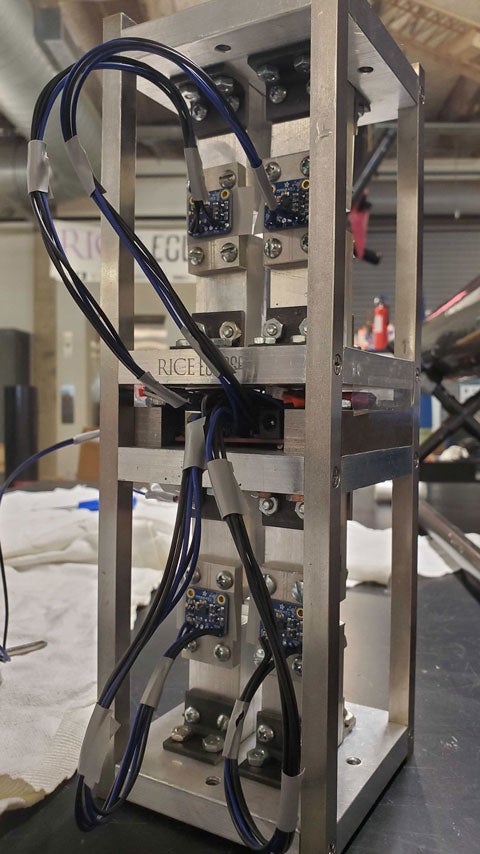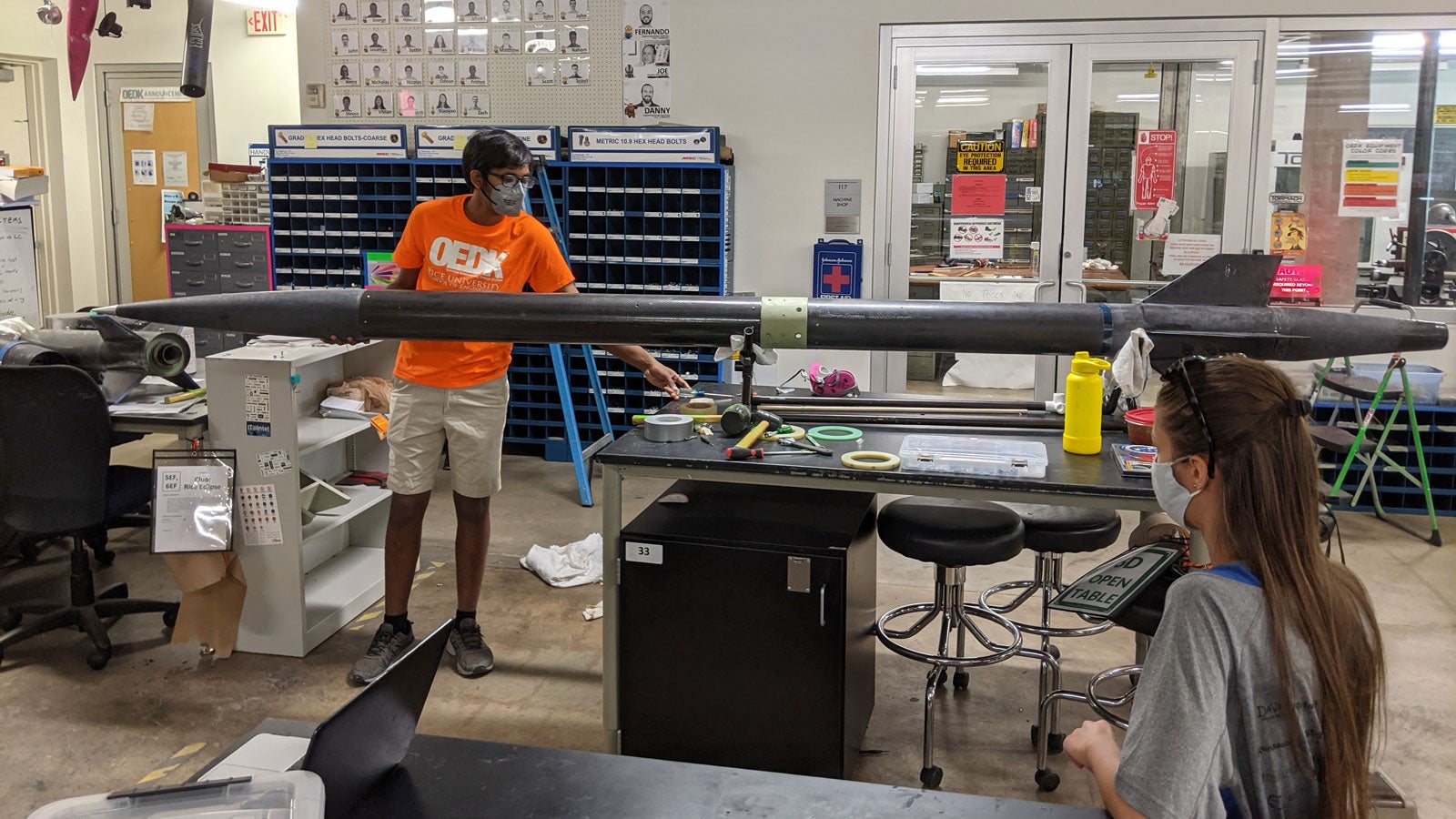Athena, the most advanced rocket yet designed and built by Rice Eclipse, the university’s rocketry team, is scheduled for liftoff on June 5 in the Mojave Desert.
The original launch was scheduled to take place at the 2021 Spaceport America Cup competition but was canceled because of the COVID-19 lockdown. The rescheduled liftoff will take place at the 2021 Friends of Amateur Rocketry (FAR) 10-30 competition. FAR is a rocketry organization that hosts a launch site north of Edwards Air Force Base in California.

“Despite the pandemic, Athena is all set to go. It was built under lockdown conditions at Rice but now it will be launched on schedule,” said Jeffrey Michel, a senior in mechanical engineering (MECH) and outgoing president of Rice Eclipse.
The goal is for Athena to reach an altitude of 30,000 feet while carrying a scientific payload. To do so, the rocket will achieve supersonic speed; that is, faster than the speed of sound (roughly 768 miles per hour). Athena is the first rocket built by Rice students to exceed the speed of sound, and the first to achieve that high an apogee. Last year’s Rice Eclipse rocket, Noctua III, reached an altitude of 10,176 feet.
“We learned a lot from last year’s design. Athena is a more robust rocket,” said Kimberly Rodriguez, a junior in MECH. She is Rice Eclipse’s aerodynamics lead and the project manager of Athena.
The latest rocket’s name derives from the Athenian owls on Rice University’s academic seal. The owl is a symbol of Athena, the virgin goddess of wisdom, or Minerva, her Roman successor. She and the owl are associated with wisdom, learning and science.
Athena is 12 feet long, six inches in diameter and is propelled by a commercially manufactured solid motor. The entire rocket, with motor and payload, will weigh 80 pounds. More than 30 Rice students were involved in the project as members of Rice Eclipse.
Athena will carry a CubeSat-style scientific payload for performing in-flight vibration-damping experiments. The payload was manufactured by Eclipse for the Tribomechadynamics Laboratory of Matthew Brake, assistant professor of MECH at Rice. The rocket is fitted with parachutes to enable a soft-landing return to Earth.
The cost of designing and building Athena was roughly $6,500. Funding came from the Oshman Engineering Design Kitchen (where most of the work was done), the Rice Center for Engineering Leadership, Chevron, the Rice Space Institute and a Student Association Initiative Fund grant.
Michel, who has completed four internships at NASA’s Johnson Space Center as part of their Pathways co-op program, will go to work after graduation as an in-situ resource utilization engineer with NASA. Rodriguez will intern at Boeing this summer as a structural engineer for Earth-orbiting satellites.

